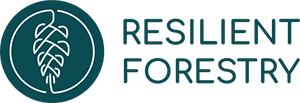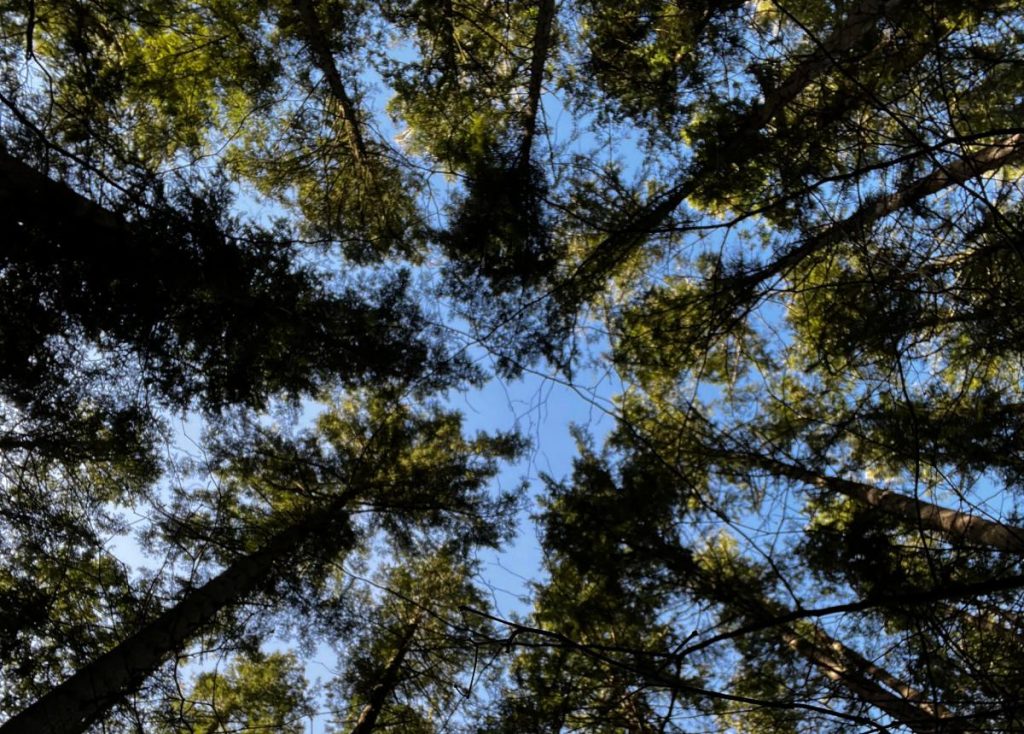What is a Forest Stewardship Plan?
A Forest Stewardship Plan (also known as a Forest Management Plan) is a comprehensive strategic document that outlines the management objectives, strategies, and actions for a specific forested area. It is basically a thoughtful road map of how to manage your forest for the foreseeable future that promotes forest, water, and human health.
It is typically developed by landowners, forest managers, or government agencies responsible for the management and conservation of forested lands. The primary goal of a Forest Stewardship Plan is to ensure the sustainable and responsible management of forest resources while considering ecological, economic, and social factors.
My forest is small, why do I need one?
Having a forest stewardship plan in place can help you understand your current forest conditions better. You will get information on your trees, understory vegetation, soils, and streams/wetlands and suggestions for management actions that will help your property get to your future objectives.
Washington State offers various tax incentives and programs to landowners who engage in responsible forest stewardship activities, including the development and implementation of Forest Stewardship Plans. Here are some potential tax incentives that are currently available in Washington State (As of August 2023):
- Current Use Taxation (Forest Taxation): Washington State has a program that allows landowners who qualify and commit to maintaining their land for commercial timber production to have their property taxed based on its current use rather than its market value. This can result in significantly reduced property tax assessments. To qualify, landowners usually need to have an FSP in place.(State Department of Revenue, 2022)
- Public Benefit Rating System (PBRS)/ Open Space Tax Exemption: This program, part of the current use taxation framework, assesses landowners’ adherence to good forest stewardship practices. By meeting certain criteria outlined in an FSP, landowners can earn PBRS points, which can further reduce property taxes.(Open Space Taxation Act, 2021)
- Stewardship Incentive Program (SIP): Some counties offer financial incentives to landowners who adopt and follow approved forest stewardship plans. The program encourages sustainable forest management practices, and eligible landowners can receive financial assistance for implementing recommended activities.(Stewardship Incentive Program, n.d.)
- Conservation Easements: Landowners may also consider placing conservation easements on their forested property. This involves voluntarily restricting certain development rights in exchange for potential income tax deductions. These easements can help protect the land’s ecological and scenic values while offering potential tax benefits.
- Cost-Share Programs: While not tax incentives per se, Washington State’s Department of Natural Resources and other organizations sometimes offer cost-share programs that provide financial assistance for specific forest stewardship activities outlined in an FSP, such as reforestation, thinning, and wildlife habitat improvement.
- Federal Tax Benefits: In addition to state-level incentives, there might be federal tax benefits available for engaging in sustainable forestry practices. Consultation with a tax professional or forestry expert is recommended to understand the federal tax implications of forest stewardship activities.
Who is eligible?
Forestland owners of 5 or more acres in Washington are eligible for a site visit at no cost. Owners of smaller acreages may receive a visit depending on forester availability but can get consultation from DNR by telephone or email. (https://www.dnr.wa.gov/forest-stewardship-planning)
It’s important to note that the above tax incentive programs often have specific eligibility requirements, application processes, and compliance obligations. If you’re considering participating in any of these programs specifically, I strongly advise contacting the Washington State Department of Revenue, the Washington State Department of Natural Resources, or a tax professional with expertise in forestry taxation to get the most up-to-date and accurate information.
What do I do?
Coming to this blog post was a great first step! Now that you know what a Forest Stewardship Plan is and how it benefits you, we can discuss how to get one of your very own. Below you will find resources to help you dive deeper into Forest Stewardship Planning. If you’re not in King County, it’s worth checking if your county has any cost-sharing programs or incentives for Forest Stewardship Planning.
Ready for the next move? Come chat with us at Resilient Forestry. We want to hear about your property, what you’re aiming for with its management, and your big-picture goals. Once we’ve had a quick chat, we’ll set up a time for one of our friendly foresters to swing by your place.
On the day of our inspection, our forester will meet you at the property and dig deeper into your plans for the forest. Then, they’ll spend some time (however long it takes, based on your acreage) walking around, taking tree measurements, noting any key features, and generally gathering data for your FSP. With all this info in hand, our forester will create a Forest Stewardship plan that covers all the standards and requirements set out by the Washington State Integrated Forest Management Plan Guidelines. After sending it to you for review, and making any adjustments based on your feedback, you will be the owner of your very own Forest Stewardship Plan and may be able to apply for the tax incentives listed above!
Your journey to better understanding your forests, protecting natural resources, and maybe getting a bit more money in your pocket is only one call or email away! Contact us here at Resilient Forestry:
Email: contact@resilientforestry.com
Telephone:(206) 730-6154
.jpg)
Resources
King County
Current use taxation programs
https://kingcounty.gov/services/environment/stewardship/sustainable-building/resource-protection-incentives.aspx
Forest stewardship planning in King County
Washington State
Department of Revenue: Current Use and Designated Forestland
https://dor.wa.gov/sites/default/files/2022-02/CurrentUseDesignatedForestlandManual.pdf
The Forest Landowners Guide to the Federal Income Tax
Department of Natural Resources: Forest Stewardship Planning
https://www.dnr.wa.gov/forest-stewardship-planning
Financial Assistance for Wildfire Resilience and Forest Health in Washington State
https://www.dnr.wa.gov/cost-share
Reference
Open Space Taxation Act. (2021). www.dor.wa.gov. State Department of Revenue, W. (2022). Current Use and Designated Forestland Administration. Stewardship Incentive Program. (n.d.). Retrieved August 15, 2023, from https://lewiscountywa.gov/departments/weed-control/services/stewardship-incentive-program/


